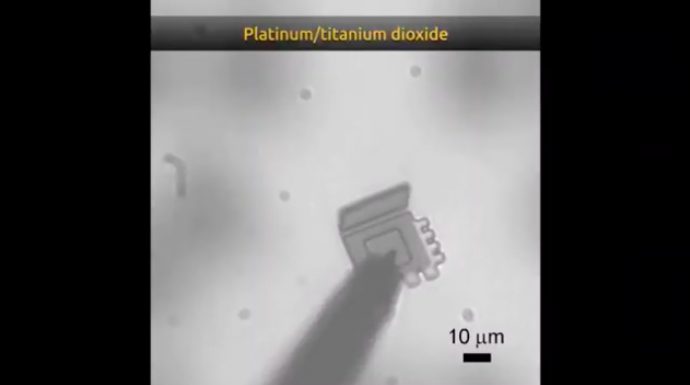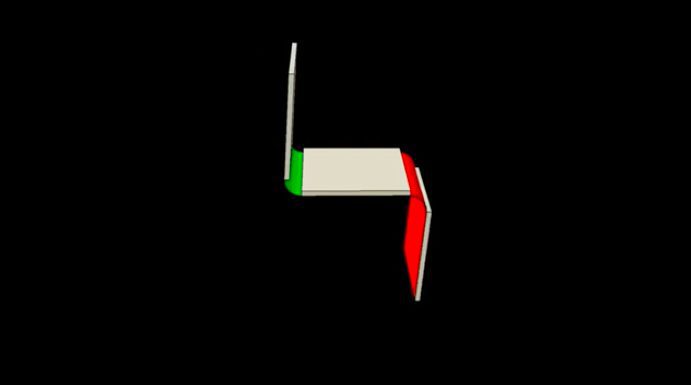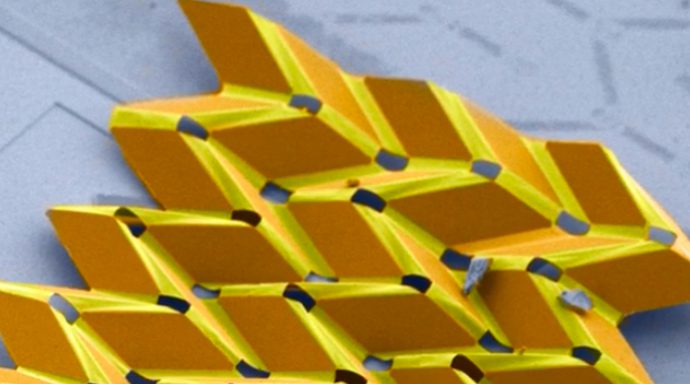Origami is the art of paper folding. It has been around for centuries. But a group of scientists at Cornell University in Ithaca, New York are taking this art form into the future.
They've made self-folding microscopic 'origami robots'. They are part of a movement known as nanotech—extremely small robots that are essentially impossible to see with the naked eye.
And just what could such tiny machines do for us? Well, while you think about that, let's first talk about just how small these things are.
Atom-sized tech

That is one tiny bot! (Cornell University/YouTube)
These robots are made of many tiny panels. The panels are arranged in a pattern so that when they fold, they take a certain shape.
Building these things is a remarkable feat because they are measured not in centimetres or even millimetres, but in microns (µm). One millimetre is made of 1000 microns! And that is just the length and width of the panels. When it comes to their thickness? Well, they're barely there at all.
Each panel is about 30 atoms thick. Not even microns! And just how thin is 30 atoms? Well, what is the thinnest thing you can think of? A sheet of paper? Well, paper is about 100,000 atoms thick. These nano-panels are over 3,000 times thinner than a sheet of paper!
How are they controlled?

A small electrical charge—which causes a chemical reaction—is what causes these robots to fold or unfold. (Cornell University/YouTube)
Right now, these bots are very simple machines. They are built to fold and unfold. That's it.
To make this happen, they are charged with a single volt of electricity. Once hit with the electricity, the robots are able to hold their charge indefinitely (in other words for a very long time). To return to their unfolded state, they are given a negative charge of electricity. And these nanobots can fold in a small amount of time—about 100 milliseconds (one tenth of a second).
The smallest adventure

Ultimately, engineers hope to connect many of these nanobots together to create a complicated machine. (Cornell University/YouTube)
So. This nanotech makes a grain of sand look like a boulder. Why would we need robots this tiny?
Though these particular robots can't do a lot, the researchers have very big plans. After all, what is a robot but a bunch of controllable moving parts that bend and rotate? So if you can make a few panels fold on command into a particular shape, then eventually, you could put together many into a 'larger' machine that could perform more complex tasks!
That is the hope with this nanotech. According to their press release, the researchers hope that "these innovations may someday lead to nano-Roomba-type robots that can clean bacterial infection from human tissue, micro-factories that can transform manufacturing, and robotic surgical instruments that are ten times smaller than current devices."
Suddenly, that nano origami bird feels like a big deal, right?
Listen to the researchers explain their project further in the video below.
(P.S. There are a few big, scientific words in this video, but don't be put off. "Actuate?" That's just a fancy word for "make move"! "Functionality"? That's just "ability". Now let's check out these mini bots!)
 It's a bird? Nope! It's nanotech! (Cornell University/YouTube)
It's a bird? Nope! It's nanotech! (Cornell University/YouTube)









